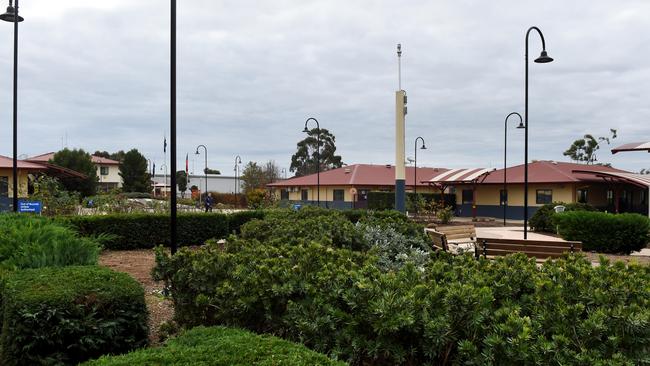Coroner to probe baby’s death at Dame Phyllis Frost Centre
A 12-day-old baby who died in a maximum security women’s prison had been approved to live there with her mother. Now an inquiry will probe why.

Police & Courts
Don't miss out on the headlines from Police & Courts. Followed categories will be added to My News.
Baby A’s fight for life began when she was still in the womb.
Her drug addict mother’s illicit substance abuse had meant she was on a methadone program while she was pregnant.
The exposure to the prescription opioid drug would mean the little girl would be born addicted to methadone — and would have to be closely monitored.
To make matters worse, her mother was in prison for drug-related offending and had been approved to have Baby A reside with her at Dame Phyllis Frost Centre.
It would be that maximum security women’s prison in Ravenhall on the outskirts of Melbourne where the fragile newborn would take her last breath on August 18, 2018 — just 12 days after entering the world.
Every hour of her short life will be heavily scrutinised in a 10-day coronial inquest expected to kick off in Victoria’s Coroner’s Court on Monday.
One of the main questions Coroner John Olle will be looking to answer will be: Could Baby A’s death have been prevented?

Doctors who signed off for the newborn to leave Sunshine Hospital and go into her mother’s care in prison a day earlier will be called to testify why they did so.
The Corrections-run Living with Mum program, which allows young children to reside with their mothers in prison, will also be under the spotlight.
Rachel Ellyard, counsel assisting the coroner, told the court at a pre-inquest hearing last month how Baby A could not have been more vulnerable.
“It’s hard to imagine a child more vulnerable than Baby A,” Ms Ellyard said.
“She was vulnerable because she was a newborn baby. She was vulnerable because she’d been born addicted to methadone, and therefore, had additional health needs.
“She was vulnerable because her mother was in prison, and was herself a person with drug addiction.
“So her case raises important questions about children in her position and how they are cared for.”
The court heard Baby A had spent the first eight days of her life in Sunshine Hospital’s special care nursery as they monitored her for methadone withdrawal and treated her for jaundice.
Her mother was also provided support with establishing breastfeeding and supplementary feeding, and best practice for baby sleeping positions.
On August 14, Baby A was assessed as being suitable for discharge, despite weighing 13.5 per cent less than she was at birth.
“It seems that the doctor who discharged her may not have been aware of that most recent weight loss,” Ms Ellyard said.
But she was readmitted to the hospital the following day after a midwife visited the prison and observed she was mildly dehydrated, jaundice and had lost more weight.
On August 17 — the day before her death — Baby A was discharged again and returned to the prison.

That night her mother recalled feeding her at 11pm, and a few hours later at 2am.
But when she woke between 5 and 5.30am in anticipation of giving her another feed, she found Baby A unresponsive in her cot.
“When she tried to wake her she found she was not breathing, and her dummy was out of her mouth,” Ms Ellyard told the court.
“Her mother called for help by pushing a buzzer and she attempted CPR on a couch surface with the help of another mother.”
But when emergency services, including firefighters and paramedics, arrived, Baby A couldn’t be revived.
Another mother in the specialised prison unit reported last hearing Baby A crying about 2.30am.
Her cause of death has been determined as Sudden Infant Death Syndrome (SIDS).
Ms Ellyard said there were lots of questions raised since Baby A’s death, which will form the scope of the inquest.
Among those, she said, would be whether Baby A would have been discharged if her mother was not in custody, and whether Baby A’s needs, as a baby born drug addicted, were able to be met in a prison setting.
The immediate circumstances of baby A’s death would also be looked at, Ms Ellyard said, including if there was a timely response to her mother’s call for help.
The Sunday Herald Sun is prohibited from identifying the newborn and her mother, who had a penchant for taking methamphetamine and heroin.
The Coroner’s Court has given the baby the pseudonym, Baby A, to “protect the privacy of the parents”.
The mother’s taxpayer-funded Legal Aid lawyer argued the publication of her identity was “contrary to the public interest” and would cause her “further distress”.
They said “the mother has human rights to privacy and reputation”.





